Garbage Air Separator: A Powerful Assistant for Garbage Disposal
1). In today's society, garbage disposal has become an increasingly serious problem. With the acceleration of urbanization and the improvement of people's living standards, the amount of garbage generated has continued to increase. How to effectively treat and classify garbage and realize resource recycling has become a problem that needs to be solved urgently. As an efficient and environmentally friendly garbage disposal equipment, the garbage air separator plays an important role in this field.
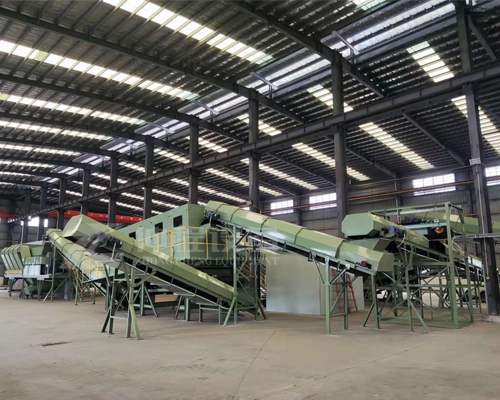
2). Working principle
The garbage air separator mainly uses the principle of aerodynamics to separate garbage. Specifically, when the garbage is transported to the inside of the air separator through the conveyor belt, the air supply device in the air separator will generate a strong airflow. Under the action of wind, light garbage, such as plastic, paper, wood chips, etc., will be blown to one side or above, while heavier garbage, such as metal, glass, bricks, etc., will fall or be blown to the other side due to gravity, thereby realizing the separation of light and heavy garbage. For example, in some air separators, a rotating drum separation unit is also set up, where materials are separated according to weight, light materials are blown away by the wind, and heavy materials fall down. Some air separators can effectively separate materials at a better flow rate and flow rate by adjusting the air supply angle, the position of the distributor, the position of the curtain, etc., so as to achieve better treatment effects.
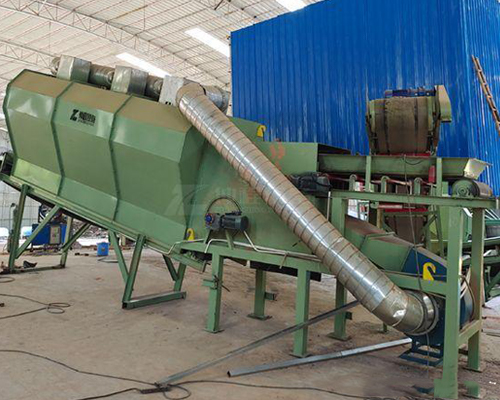
3). Application scenarios
1. Urban domestic waste treatment: In urban waste treatment plants, air separators can be used to preliminarily classify mixed domestic waste. Light recyclable materials such as plastic film and paper in the garbage are separated from heavy metals and glass, which facilitates subsequent waste treatment and resource recycling. For example, the separated light materials can be incinerated to generate electricity, and the heavy materials can be recycled and reused.
2. Construction waste treatment: For a large amount of construction waste generated by building demolition and construction sites, air separators can effectively separate construction waste of different materials such as concrete blocks, bricks, and steel bars. Among them, light wood chips, plastics, etc. can be recycled for other fields, and heavy building materials can also be reused after processing, reducing the pollution of the environment and the consumption of natural resources by construction waste.
3. Industrial waste treatment: Various wastes generated in the industrial production process can also be classified and treated by air separators. Help enterprises to separate valuable recyclables, such as metal scraps, plastic particles, etc., reduce the company's waste disposal costs, and improve the recycling rate of resources.
Landfill: In the landfill, the air separator can sort the garbage before landfill and separate the recyclable items from the harmful substances. On the one hand, it can realize the reuse of resources and reduce the demand for raw materials; on the other hand, it can avoid the pollution of soil and groundwater by harmful substances and protect the ecological environment.
4). Advantages and characteristics
1. Efficient sorting: Compared with the traditional manual sorting method, the garbage air separator can realize automatic sorting, which greatly improves the work efficiency, can process a large amount of garbage in a short time, and reduces the manpower cost and labor intensity.
2. Accurate classification: By accurately controlling parameters such as wind speed and wind direction, the air separator can accurately separate different types of garbage according to the density, weight and other characteristics of the garbage, improve the purity of the recycled materials, and provide better conditions for subsequent resource recovery and reuse.
3. Energy saving and environmental protection: The air separator uses physical methods for sorting, without the need to add chemical reagents, which reduces secondary pollution to the environment. At the same time, its internal wind system usually adopts an efficient and energy-saving design, which effectively reduces energy consumption.
4. Easy operation: The operation of the air separator is relatively simple. You only need to put the garbage into the equipment and turn on the power supply to run it automatically. Moreover, the maintenance of the equipment is relatively convenient. You only need to regularly clean the dust and debris inside the equipment to keep the equipment running normally.

5). Development prospects
With the continuous enhancement of people's environmental awareness and the increasing requirements for garbage disposal, the application prospects of garbage air separators are very broad. In the future, garbage air separators will develop in the direction of intelligence, efficiency and precision. On the one hand, by adding sensors and automatic control equipment, the air separator will be able to achieve more accurate classification of waste, automatically adjust parameters such as wind speed and wind direction according to the characteristics of different garbage, and further improve the sorting effect. On the other hand, with the continuous advancement of science and technology, the processing capacity and efficiency of the air separator will continue to improve, which can better meet the needs of large-scale garbage disposal. In addition, the garbage air separator will also be combined with other advanced garbage disposal technologies and equipment to form a more complete garbage disposal industry chain, making greater contributions to the reduction, resource utilization and harmless treatment of garbage.
6).Parameter
| Air Separator 800 | Air Separator 1200 | Air Separator 1600 | |
| Feeding Belt Width | 800mm | 1200mm | 1600mm |
| Air volume | 8000-19000 m³/h | 12000-29000 m³/h | 15000-35000 m³/h |
| Full pressure | 2500Pa | 2500Pa | 2500Pa |
| Power | 38kw | 42kw | 55kw |
| Throughput | 20-30 m³/h | 30-50 m³/h | 50-70 m³/h |
-
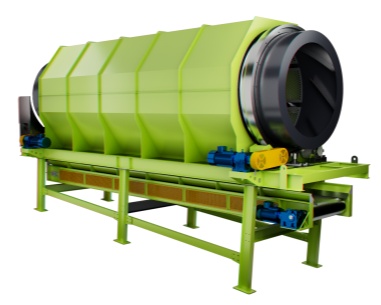 Trommel screenTrommel screen, also known as drum screens, are widely used in various industries for sorting and separating materials.Get Quote
Trommel screenTrommel screen, also known as drum screens, are widely used in various industries for sorting and separating materials.Get Quote -
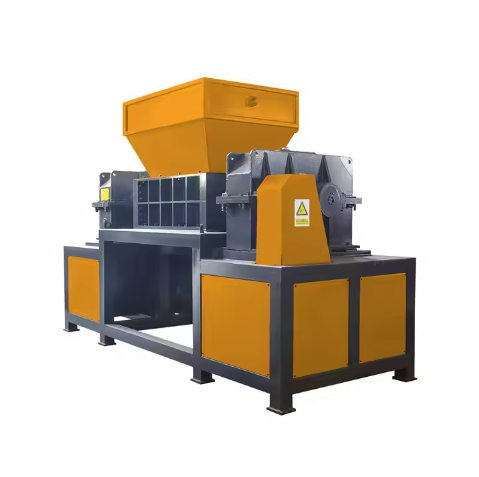 Crop straw double shaft shreddApplications:Biomass Energy Production: Shredded straw can be used as a feedstock for bioenergy plants to produce electricity or heat.Livestock Feed: Reduced-si...Get Quote
Crop straw double shaft shreddApplications:Biomass Energy Production: Shredded straw can be used as a feedstock for bioenergy plants to produce electricity or heat.Livestock Feed: Reduced-si...Get Quote -
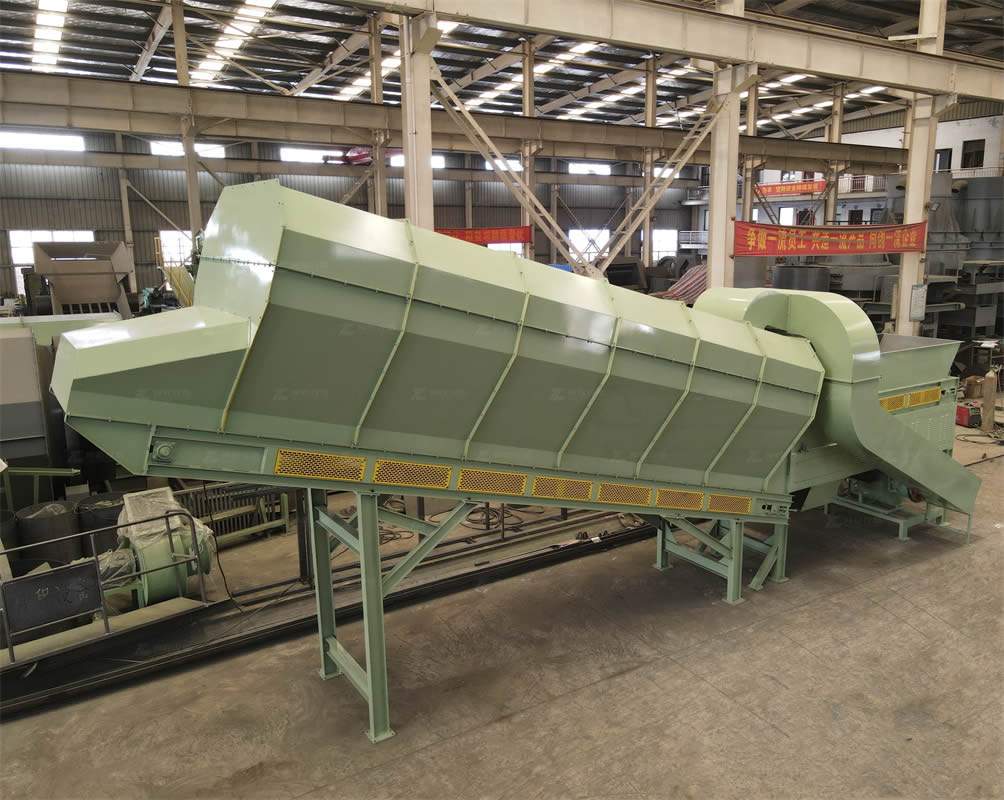 Zhongcheng Air Drum SeparatorAir drum separators effectively separate lightweight materials (e.g., plastics, paper) from heavier materials (e.g., metals, glass). This high efficiency is cru...Get Quote
Zhongcheng Air Drum SeparatorAir drum separators effectively separate lightweight materials (e.g., plastics, paper) from heavier materials (e.g., metals, glass). This high efficiency is cru...Get Quote
-
2024-05-29Landfill stale garbage screening projectAfter communicating with our domestic customers in Shandong Province, we learned that he needed to dispose of the garbage in the landfill through excavation, sc...
-
2023-01-12Waste FeederWaste feeder was specially designed to optimize municipal solid waste sorting systems. The Drum Feeder ensures that your sorting system, baler or shredder has a...
-
2024-08-06Plastic double shaft shredderOperation:Feeding: The plastic material is fed into the shredder through the infeed system.Shredding: As the material enters the shredding chamber, the rotating...
-
2024-04-25Recycling Finger ScreensFinger screen is a type of screening equipment used to separate materials based on size. Unlike traditional screens, finger screens consist of a series of paral...
-
2024-06-09Drum Screen RecyclingDrum screen machines are primarily used for material screening, helping to sort and recycle municipal solid waste and screen landfill waste. Their efficiency an...



